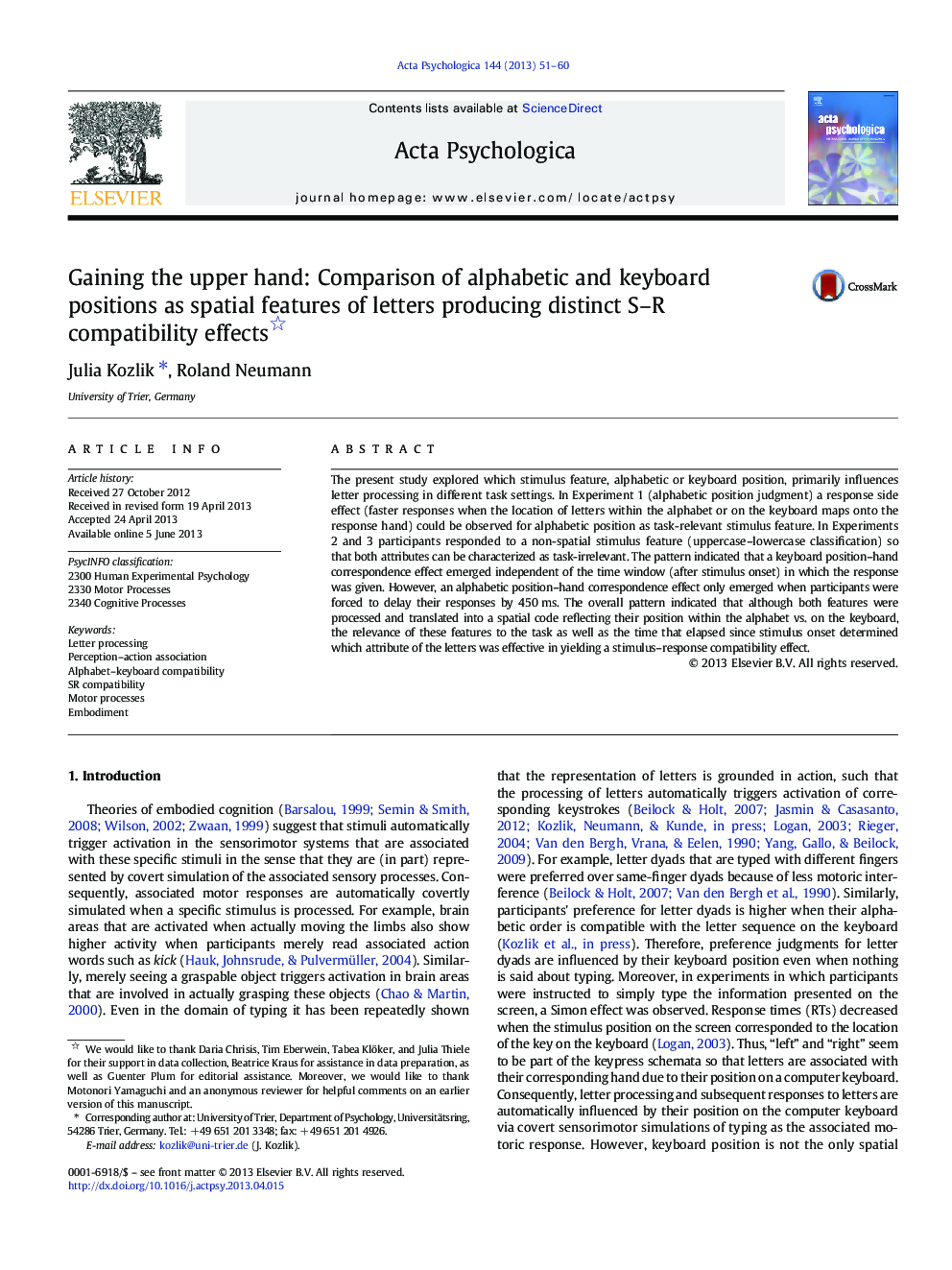| Article ID | Journal | Published Year | Pages | File Type |
|---|---|---|---|---|
| 919901 | Acta Psychologica | 2013 | 10 Pages |
•Alphabetic and keyboard positions affect response selection when task-irrelevant.•Alphabetic position–hand correspondence effect only when responses were delayed.•Keyboard position–hand correspondence effect independent of the passage of time.
The present study explored which stimulus feature, alphabetic or keyboard position, primarily influences letter processing in different task settings. In Experiment 1 (alphabetic position judgment) a response side effect (faster responses when the location of letters within the alphabet or on the keyboard maps onto the response hand) could be observed for alphabetic position as task-relevant stimulus feature. In Experiments 2 and 3 participants responded to a non-spatial stimulus feature (uppercase–lowercase classification) so that both attributes can be characterized as task-irrelevant. The pattern indicated that a keyboard position–hand correspondence effect emerged independent of the time window (after stimulus onset) in which the response was given. However, an alphabetic position–hand correspondence effect only emerged when participants were forced to delay their responses by 450 ms. The overall pattern indicated that although both features were processed and translated into a spatial code reflecting their position within the alphabet vs. on the keyboard, the relevance of these features to the task as well as the time that elapsed since stimulus onset determined which attribute of the letters was effective in yielding a stimulus–response compatibility effect.
